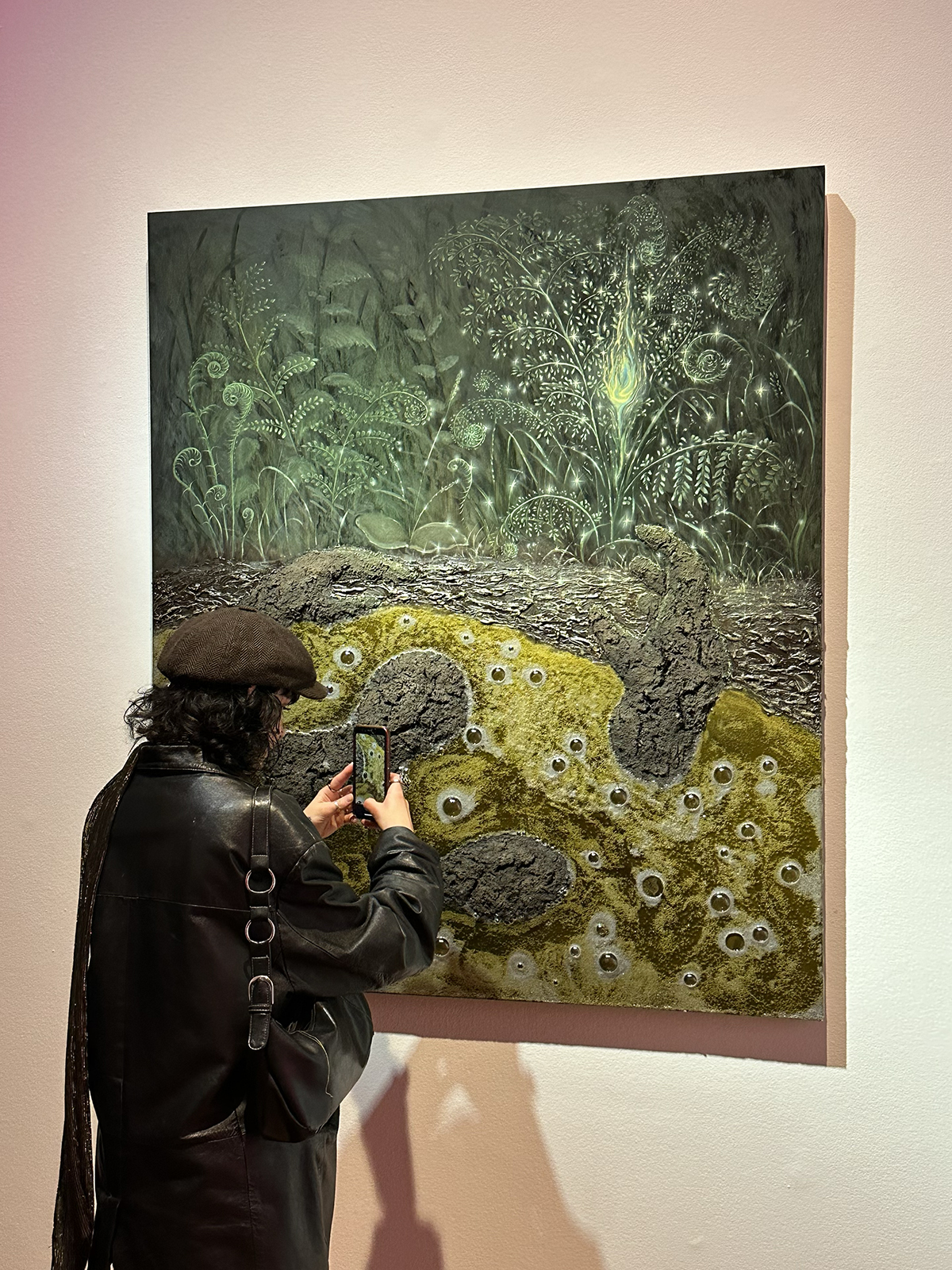Kupalnocka

Muzeum Rzeźby im. Xawerego Dunikowskiego w Królikarni,
w ramach Ephemera Festival, 06.2023 Warszawa
kuratorka Ania Batko, Gosia Plysa
PL
Marcin Janusz, Kupalnocka.
Podobno to właśnie w tę noc zakwitnie paproć, a jej perunowy kwiat będzie świecić w ciemności niczym pochodnia. Duchy i upiory wyjdą z ukrycia, brzeginie i demony opuszczą jeziora, a robaczki świętojańskie w ramach erotycznej gry uwolnią luminescencyjną lucyferynę. Na łąkach zapłoną
ogniska. W powietrzu czuć będzie zapach potu zmieszany z wonią palonej bylicy i szałwii. Niektórzy na golasa będą skakać przez ogień, inni będą tańczyć albo wróżyć obrywając płatki z polnych kwiatów. Jak tylko zajdzie słońce wszyscy zanurzą się w wodzie.
Noc Kupały to czas przesilenia i najkrótsza noc w roku. To pogańskie, nawet jeśli z czasem zawłaszczone przez chrześcijaństwo, święto miłości. To też jak wskazuje etymologia samego słowa, misterium gromady albo jeszcze lepiej, bo akcentuje to jego międzygatunkowość, stada. Zbiorowości,
którą spotyka się by wspólnie doświadczać. Tarzać się w błocie, tańczyć aż do omdlenia i przede wszystkim kąpać się, pierwszy raz od miesięcy, w zimnej i rozświetlonej blaskiem księżyca wodzie. Ta ostatnia jak wierzono, ma transgresyjną moc: odczarowuje i jednocześnie stwarza rzeczywistość.
Staje się miejscem irracjonalnego, wiążącego przeszłość z przyszłością otwarcia. Kupalnocka odnosi się do potrzeby tworzenia wspólnot i powtarzania rytuałów. I chociaż ociera się o wyssaną z palca słowiańskość i utopijne życie w zespoleniu z naturą, to jednocześnie z całym swoim
nadbagażem magicznej fantastyki jawi się też jako jeszcze jedno wcielenie wypartej mitologii. Podszywa się pod ludową historię kodującą lęki i niepokoje, zawłaszczenie i wykorzenienie, ale też staje się częścią szeptanych i pożyczanych sobie narracji, które pod warstwą niesamowitości kryją esencjonalną ciemność. W tym sensie to nie tyle krytyka nierówności i społecznego porządku, co raczej strategia sklejania świata na nowo. Kąpania się wciąż w tej samej rzece i odgrywania tej same sceny. Słońce i księżyc. Woda i ogień. Żywi i umarli. Tu i teraz. Wszyscy i wszystko. W kupie. Z powrotem do mitu jest trochę jak z powrotem do natury. Nie chodzi o to, że jest on niemożliwy, ale o to, że już sam sposób w jaki nasze wyobrażenia związane z kolonialną historią i eksploatacyjnym wyzyskiem konstruują dzikość, sprawia, że staje się on nie do pomyślenia.
Tekst: Ania Batko




EN
Kupala Night. Marcin Janusz
It is said to be precisely the night when a fern will flower and its Perun flower will light up the dark like a torch. Ghosts and spectres will leave their hidings, Bereginyas and demons abandon their lakes, and fireflies will release the luminescent luciferin as part of their erotic play. Meadows will be lit by bonfires. The smell of sweat will be felt in the air, mixed with the scent of burnt mugwort and sage. Some, naked, will jump over the fire, others will be dancing or telling the future, plucking petals from wildflowers. As soon as the sun sets, everybody will be immersed in water.
The Kupala Night is the time of solstice and the shortest night of the year. It is a Pagan festival of love, even if appropriated by Christianity in due course. According to the etymology of the very word, it is also a mystery of the mob or, better still, the pack, highlighting its inter-species nature. The
community that meets to experience in communion. To wallow in the mud, dance until they faint and, first and foremost, to bathe, for the first time in months, in the cold and moonlit water. Such water, it was believed, has a transgressive power: it simultaneously disenchants and creates reality. It
becomes a site of an irrational opening, connecting the past to the future.
The Kupala Night alludes to the need for creating communities and repeating rituals. And although it touches upon the purely invented Slavonicism and the utopian life in communion with nature, it
simultaneously appears, overburdened with its magical fantasy world, as another embodiment of repressed mythology. It poses as folk history, coding anxieties and fears, appropriation and uprooting, but it also becomes a part of whispered and borrowed narratives which hide essential
darkness underneath the layer of the uncanny. In this sense, it is not so much a critique of inequality and social order, but rather a strategy of piecing the world together anew. Bathing eternally in the very same river and staging the very same scene. The sun and the moon. Water and fire. The living and the dead. Here and now. Everything and everyone. In one pack. A return to the myth is a little like the return to nature. The point being that it is not in itself impossible, but rather that the very manner our representations related to colonial history and abusive exploitation construct savagery or wildness makes it unthinkable.
Text: Ania Batko